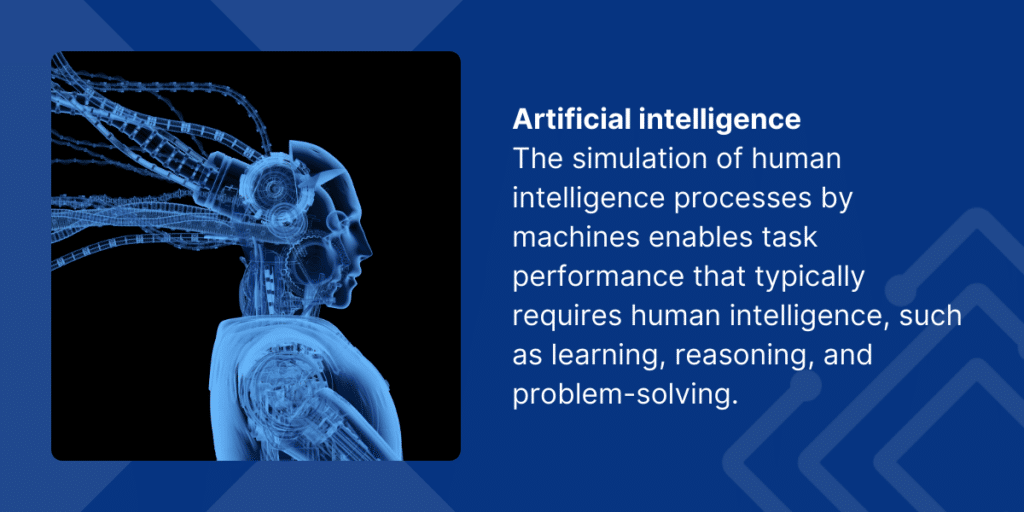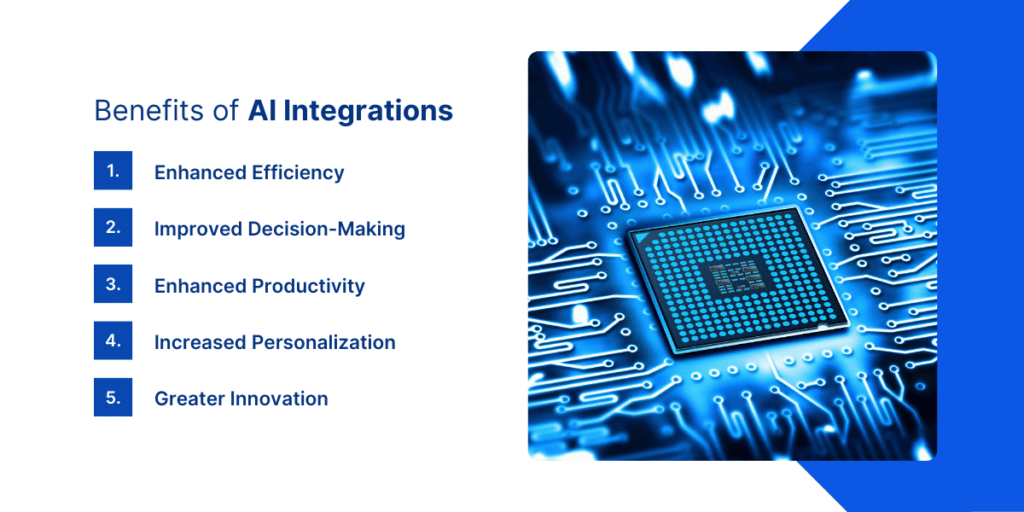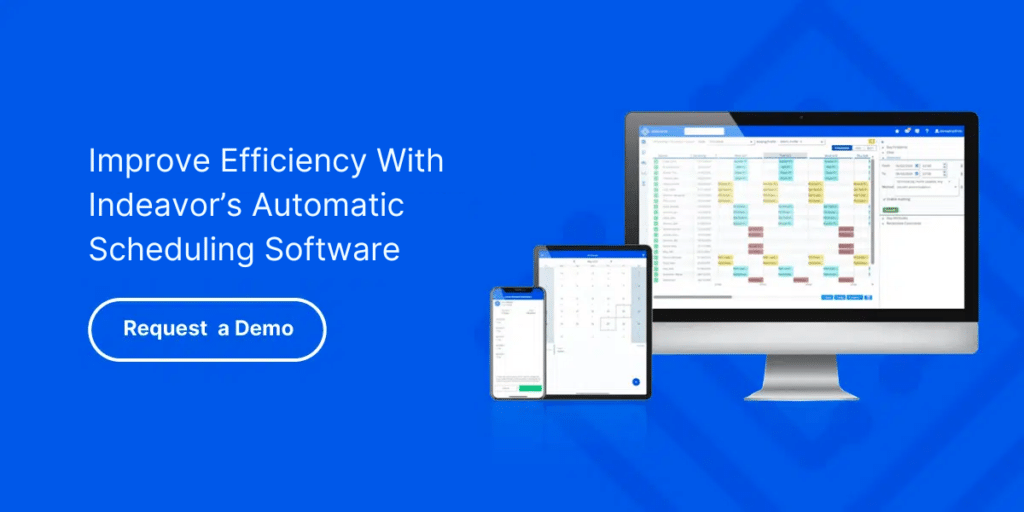In an era characterized by rapid technological advancement, the integration of artificial intelligence (AI) and automation has become increasingly prevalent across various industries. From manufacturing to government, businesses are harnessing the power of AI and automation to streamline processes, optimize productivity, and drive innovation.
At the heart of this transformation lies workforce management – the strategic coordination of an organization’s human resources to achieve its goals. This article explores the profound impact of AI and automation on workforce management, highlighting their role in revolutionizing traditional practices and unlocking new opportunities for efficiency and effectiveness.
Understanding Artificial Intelligence and Automation
Artificial intelligence refers to the simulation of human intelligence processes by machines, particularly computer systems, enabling them to perform tasks that typically require human intelligence, such as learning, reasoning, and problem-solving.
On the other hand, automation involves the use of technology to automate repetitive tasks and processes, reducing the need for human intervention and increasing operational efficiency. Over the years, AI and automation have evolved from theoretical concepts to practical applications, revolutionizing various sectors and industries.
Examples of AI and automation applications abound in different sectors, showcasing the versatility and transformative potential of these technologies. In manufacturing, for instance, AI-powered robots are used for tasks such as assembly, quality control, and predictive maintenance, leading to improved production efficiency and reduced downtime.
The evolution of Artificial Intelligence scheduling and automation has been driven by advancements in computing power, data analytics, and machine learning algorithms. With access to vast amounts of data and sophisticated algorithms, AI systems can learn from experience, adapt to new information, and continuously improve over time. This iterative process of learning and optimization enables AI-powered systems to perform complex tasks with greater accuracy, efficiency, and reliability than ever before.

The Impact on Workforce Management
In the ever-evolving landscape of business, workforce management stands as a cornerstone for organizational success. Traditionally, this vital function relied heavily on manual processes and human judgment. However, with the advent of artificial intelligence (AI) and automation, the game has changed entirely.
Traditional methods of workforce management often involved cumbersome manual processes, spreadsheets, and paper-based systems. Managers would spend considerable time and effort scheduling shifts, tracking attendance, and managing employee performance. These methods were not only time-consuming but also prone to errors, leading to inefficiencies and frustrations for both managers and employees alike.
Modern Workforce Management Challenges
Modern workforce managers face a myriad of challenges in today’s dynamic business environment. From fluctuating demand and skill shortages to compliance with labor laws and regulations, the complexities of workforce management are ever-increasing. Moreover, the rise of remote work and the gig economy has added another layer of complexity, requiring managers to adapt to new ways of managing and engaging with their workforce.
Artificial Intelligence scheduling and automation offer innovative solutions to many of these challenges. By leveraging AI algorithms and automation tools, businesses can streamline processes, optimize resource allocation, and make data-driven decisions.
For example, AI-powered scheduling software can analyze historical data, employee preferences, and business requirements to create optimized schedules that maximize productivity and minimize labor costs. Automation tools can also handle routine tasks such as shift assignments, attendance tracking, and performance evaluations, freeing up valuable time for managers to focus on strategic initiatives.
Benefits of Artificial Intelligence Integrations
The integration of AI and automation into workforce management processes represents a transformative shift for businesses, offering a multitude of advantages that significantly enhance operational efficacy and strategic decision-making.
- Enhanced Efficiency: AI integration automates repetitive tasks, streamlines workflows, and reduces manual intervention, leading to significant time savings and increased operational efficiency.
- Improved Decision-Making: AI-driven analytics provide real-time insights, predictive capabilities, and data-driven recommendations, empowering decision-makers to make informed and strategic choices that drive business growth and competitiveness.
- Enhanced Productivity: By automating routine tasks and optimizing resource allocation, AI integrations enable employees to focus on high-value activities, leading to increased productivity and output.
- Increased Personalization: AI-powered systems can analyze vast amounts of data to deliver personalized experiences tailored to individual preferences and needs, whether it’s personalized recommendations for customers or personalized development plans for employees.
- Greater Innovation: AI integrations enable businesses to explore new opportunities, develop innovative solutions, and stay ahead of the competition by leveraging cutting-edge technologies and data-driven insights to drive continuous improvement and innovation.
Ultimately, the integration of AI and automation not only enhances efficiency but also drives innovation, enabling businesses to stay agile and competitive in today’s rapidly evolving market landscape.

Optimizing Employee Scheduling
AI algorithms play a pivotal role in creating optimized employee schedules by analyzing various factors such as historical data, employee availability, skill sets, and business requirements. These sophisticated algorithms can process vast amounts of data and identify patterns and trends to generate schedules that maximize productivity, minimize labor costs, and ensure adequate coverage. By leveraging AI scheduling, businesses can create schedules that not only meet operational needs but also consider factors such as employee preferences, labor laws, and compliance regulations.
Automation streamlines the process of shift assignments and adjustments, reducing the administrative burden on managers while ensuring accuracy. AI-powered scheduling software can automatically assign shifts based on predefined criteria, such as employee availability, skills, and preferences, while also taking into account business needs and constraints. Additionally, automation enables managers to quickly adjust schedules in response to changing demands, unforeseen absences, or last-minute changes, minimizing disruptions and ensuring continuity of operations.
One of the key challenges in employee scheduling is balancing employee preferences with business needs. AI helps address this challenge by taking into account various factors, such as employee availability, preferred shifts, and time-off requests, while still meeting operational requirements. By striking a balance between employee satisfaction and operational efficiency, businesses can improve morale, reduce turnover, and enhance overall performance.
Ensuring Compliance and Risk Management
In the realm of workforce management, compliance with labor laws and regulations is paramount for organizations to operate ethically, mitigate risks, and avoid legal repercussions. Traditionally, ensuring compliance and managing associated risks relied heavily on manual processes and human oversight. However, the advent of artificial intelligence (AI) and automation has revolutionized these practices, offering sophisticated solutions to monitor compliance and manage risks effectively.
Automated Compliance Reporting and Auditing
Automation streamlines the process of compliance reporting and audits, reducing the time and effort required to gather and analyze data. AI-powered systems can automatically generate comprehensive reports and dashboards that provide insights into compliance status, trends, and areas for improvement.
Moreover, automation facilitates the auditing process by systematically reviewing records, identifying discrepancies, and conducting risk assessments. By automating compliance reporting and audits, organizations can ensure accuracy, consistency, and timeliness in meeting regulatory requirements.
Reducing Risks Associated with Human Errors
Human errors are a common source of risk in workforce management, ranging from data entry mistakes to oversight of regulatory requirements. AI-powered systems mitigate these risks by automating routine tasks, minimizing the potential for human error, and ensuring consistency and accuracy in processes. For example, AI algorithms can review contracts, analyze documents, and flag discrepancies or non-compliance issues, reducing the likelihood of costly errors. By harnessing AI-powered systems, businesses can enhance risk management practices, and improve compliance.

Addressing Concerns and Challenges
As organizations embrace the integration of artificial intelligence (AI) and automation into workforce management, it is essential to acknowledge and address common concerns and challenges. From apprehensions about job displacement to ethical considerations surrounding AI usage, it’s important for businesses to navigate these concerns and leverage AI and automation responsibly.
Human Interaction
One of the primary concerns surrounding AI and automation in workforce management is the fear of job displacement. Employees may worry that automation will render their jobs obsolete or lead to layoffs. Additionally, there may be concerns about the loss of human touch and personalized interactions in employee management processes. Addressing these concerns requires transparent communication, education, and reassurance that AI and automation are meant to augment rather than replace human workers.
Resistance to Change
Resistance to change is another challenge organizations may face when implementing AI and automation in workforce management. Employees may be hesitant to adopt new technologies or processes due to fear of the unknown or perceived threats to job security. To overcome resistance to change, organizations must involve employees in the transition process, provide training and support, and demonstrate the benefits of AI and automation in improving efficiency and enhancing job satisfaction.
Ethical Considerations
Ethical considerations are paramount when integrating AI and automation into workforce management. Concerns about data privacy, bias in algorithms, and the potential for misuse of AI technology must be addressed proactively. Organizations must prioritize responsible AI usage by implementing robust data protection measures, ensuring transparency and accountability in algorithmic decision-making, and adhering to ethical principles and industry standards.
The integration of artificial intelligence, scheduling, and automation represents a transformative shift in modern workforce management. By harnessing the power of AI and automation, organizations can optimize productivity, improve decision-making, and enhance employee satisfaction. While there are concerns and challenges associated with AI and automation, proactive measures can mitigate risks and ensure responsible usage.
Looking ahead, the future of workforce management is undeniably intertwined with AI and automation, and businesses must embrace these technologies to stay competitive and drive innovation. It is imperative for organizations to seize the opportunity and leverage AI and automation for better workforce optimization, ultimately paving the way for a more efficient, agile, and sustainable future.
About the Author
Claire Pieper is the Marketing Communications Coordinator for Indeavor. In her role, she specializes in
crafting strategic and engaging content, ensuring that customers are well-informed. Claire is dedicated
to enhancing the customer experience and optimizing the user journey through Indeavor’s solutions. To
learn more or get in touch, connect with Claire on LinkedIn.







